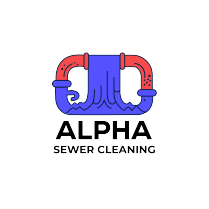24/7 EMERGENCY SERVICES
317 Loring Road Levittown NY 11756
Sewer repair

Sewer repair is an essential aspect of maintaining the health and functionality of a property’s plumbing system. Damaged sewer lines can lead to severe problems, such as water damage, foul odors, health hazards, and increased repair costs if not addressed promptly. This guide covers the causes of sewer damage, signs to watch for, repair methods, costs, and preventative measures.
Causes of Sewer Line Damage
Tree Root Intrusion
- Tree roots naturally grow toward moisture and can penetrate small cracks or joints in sewer pipes, causing blockages and structural damage.
Aging Pipes
- Older materials like clay, cast iron, or Orangeburg pipes deteriorate over time, leading to leaks or collapses.
Ground Shifts
- Soil settling, earthquakes, or heavy construction near the property can shift pipes, causing misalignment or breakage.
Corrosion
- Metal pipes, especially those in older homes, can corrode over time due to water and soil conditions.
Blockages
- Grease, food waste, foreign objects, or excessive toilet paper can clog sewer lines, creating pressure that damages pipes.
Improper Installation
- Poorly installed pipes are more likely to experience early wear and tear or improper drainage.
Heavy Loads
- Excessive weight from vehicles or structures above the sewer line can cause the pipes to crack or collapse.
Signs of Sewer Line Damage
Slow Draining
- Water draining slowly from sinks, tubs, or toilets may indicate a blockage or damaged pipe.
Frequent Backups
- Recurring sewage backups suggest a significant problem within the sewer line.
Foul Odors
- Persistent smells of sewage around the property are a clear indicator of sewer issues.
Lush or Wet Spots in Yard
- Unusually green grass or puddles in specific areas may indicate a leaking sewer line.
Foundation Issues
- Cracks or shifts in the foundation may be caused by water leaking from a damaged sewer line.
Increased Water Bill
- A sudden spike in water usage without increased consumption could point to a hidden leak.
Gurgling Sounds
- Noises from drains or toilets can indicate air trapped by blockages in the sewer system.
Methods of Sewer Repair
1. Traditional (Trench) Sewer Repair
- Description: Involves excavating the area above the damaged pipe to replace or repair it.
- Advantages:
- Effective for severe damage.
- Allows complete pipe replacement.
- Disadvantages:
- Disruptive and labor-intensive.
- Damages landscaping, driveways, or sidewalks.
2. Trenchless Sewer Repair
- Description: A less invasive method that uses advanced technology to repair pipes without extensive digging.
- Types of Trenchless Repairs:
- Pipe Bursting: A new pipe is pulled through the old, damaged one, breaking the old pipe apart.
- Pipe Lining (Cured-In-Place Pipe, CIPP): A resin-coated liner is inserted into the damaged pipe, then cured to create a new pipe within the old one.
- Advantages:
- Minimal disruption to landscaping.
- Faster and cost-effective for minor to moderate damage.
- Disadvantages:
- Not suitable for severely collapsed pipes.
- Initial costs may be higher than traditional methods.
3. Spot Repairs
- Description: Targets specific damaged sections of the sewer line.
- Advantages:
- Cost-effective for localized damage.
- Minimal disruption.
- Disadvantages:
- May not address underlying issues in the entire pipe system.
4. Sewer Line Replacement
- Description: Involves replacing the entire sewer line.
- Advantages:
- Long-term solution for aging or severely damaged systems.
- Disadvantages:
- Expensive and time-consuming.
Steps in the Sewer Repair Process
Inspection and Diagnosis
- Use sewer cameras or other tools to locate and assess the damage.
Planning and Permits
- Develop a repair plan and obtain necessary permits from local authorities.
Repair or Replacement
- Choose the appropriate method based on the type and extent of the damage.
Testing
- Once repairs are complete, test the sewer line to ensure proper functionality.
Restoration
- Restore landscaping, pavement, or structures affected during the repair process.
Costs of Sewer Repair
- Traditional Repair: $50–$200 per foot, depending on the depth and complexity.
- Trenchless Repair: $80–$250 per foot, typically higher upfront but may save on restoration costs.
- Spot Repairs: $200–$1,000, depending on the location and severity of damage.
- Full Replacement: $3,000–$25,000, depending on the length and material of the pipe.
Factors affecting costs include:
- Length and depth of the pipe.
- Type of repair method.
- Material of the pipe.
- Location (urban areas may cost more due to labor and permitting).
Benefits of Professional Sewer Repair
Accurate Diagnosis
- Professionals use advanced tools like sewer cameras to identify the exact problem.
Long-Lasting Solutions
- Repairs are done to code, ensuring durability and compliance.
Time Efficiency
- Professionals can complete repairs quickly, minimizing downtime.
Safety
- Sewer repair involves handling hazardous waste, which professionals are trained to manage safely.
Preventative Measures to Avoid Sewer Damage
Regular Inspections
- Schedule annual inspections to identify and address potential problems early.
Tree Root Management
- Plant trees and shrubs away from sewer lines. Use root barriers if necessary.
Proper Waste Disposal
- Avoid flushing non-biodegradable items or pouring grease and oil down drains.
Install Backflow Prevention Devices
- Prevent sewage from backing up into the property during heavy rainfall.
Upgrade Aging Pipes
- Replace outdated materials with durable options like PVC or HDPE.
Conclusion
Sewer repair is a crucial service that ensures the safe and efficient functioning of your plumbing system. Whether it’s a minor clog or a major pipe collapse, addressing the issue promptly can save money and prevent further damage. By understanding the causes, repair methods, and preventative measures, homeowners and businesses can maintain their sewer systems and avoid costly repairs in the future.
Newsletter
Drain cleaning involves removing clogs, debris, and buildup from pipes to restore proper water flow. It ensures smooth drainage, prevents blockages, and protects plumbing systems from damage. Professional drain cleaning uses tools like hydro jetting or augers for efficient and lasting results.
Design By Oll Solutions

